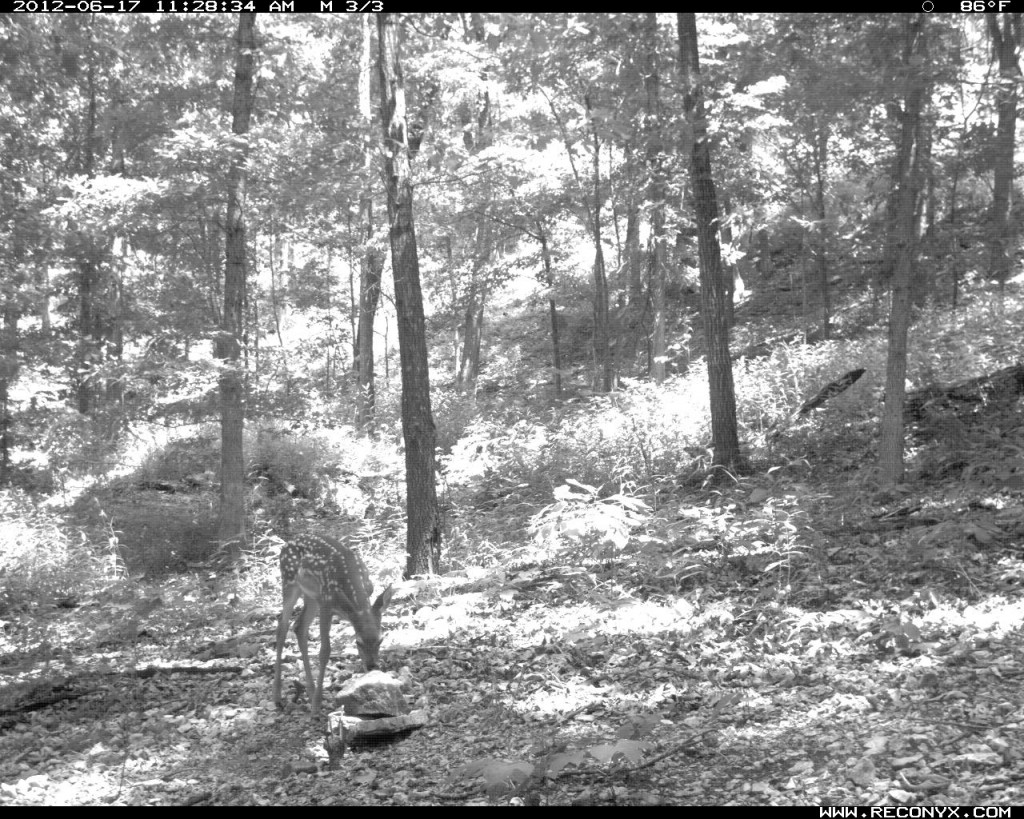Antlers and Trace Minerals
Filed under: Hunting Blog, White-tailed Deer
By mid June most bucks’ antlers are developed enough to get an estimate of their configuration and potential size for the season. I always have my Reconyx cameras pointed at Trophy Rocks this time of year. Some recent posts on my Facebook page indicates that there is some confusion of why I strongly prefer Trophy Rock as a source of trace minerals compared to cattle blocks, homebrews, etc.
So, for the record, Trophy Rock is all natural. It’s mined in Utah and shipped – there are no artificial additives, etc. It’s mined from an ancient sea bed that was capped over (probably by volcanic action). This allowed the sea minerals to remain and harden throughout the deposit (not settle out and leave pure salt).
There are more than 60 different trace minerals in Trophy Rock. The amount of any of them, except salt, is low. That’s appropriate for trace minerals. Deer only need a very small amount of trace minerals daily. Let’s define “trace.” Most researchers refer to trace minerals in parts per million (ppm) of the diet. For a point of reference, one (1) ppm is about one inch in 17 miles!
It doesn’t take much of a trace mineral to benefit a deer. But without access to trace minerals in their diet, bucks won’t be able to express their full antler growth and does won’t express their fawn producing potential.
Researchers don’t know all the trace minerals or the quantity of each that deer require. It’s likely some of the trace minerals deer require to express their potential are available in the soil and/or plant. The availability of trace mineral varies significantly from area to area and even field to field in some cases!
This is why the vast majority of cattle mineral blocks only include six minerals and most products made for deer include a maximum of 20 trace minerals. If there are appropriately fertilized crops or food plots in the area, deer most likely have access to all the macro (“needed in larger quantities” minerals like calcium and phosphorous) minerals. However, no matter how much of the macro minerals are available deer will produce smaller antlers and fewer fawns if they don’t receive the necessary trace minerals.
There is a horrible drought occurring in most of the Midwest as I write this. However, I was thrilled at the antler growth patterns and fawn production shown by my Reconyx cameras this week. I feel strongly that having Trophy Rocks out at my place has helped the herd.
I notice deer tend to use Trophy Rocks more during periods of drought. This is probably due to the fact that they are consuming a lower quality of forage (not getting as many minerals from the plants compared to during a normal growing season) and consuming more free water (standing water compared to getting water from plants).
Certainly all deer, from mature bucks to young fawns, are currently using Trophy Rocks at my property. Fellow hunters and landowners that I’ve shared trail camera pictures with have all agreed that the bucks at my place are showing bigger antlers per age class compared to where they hunt.
Growing Deer together,
Grant





